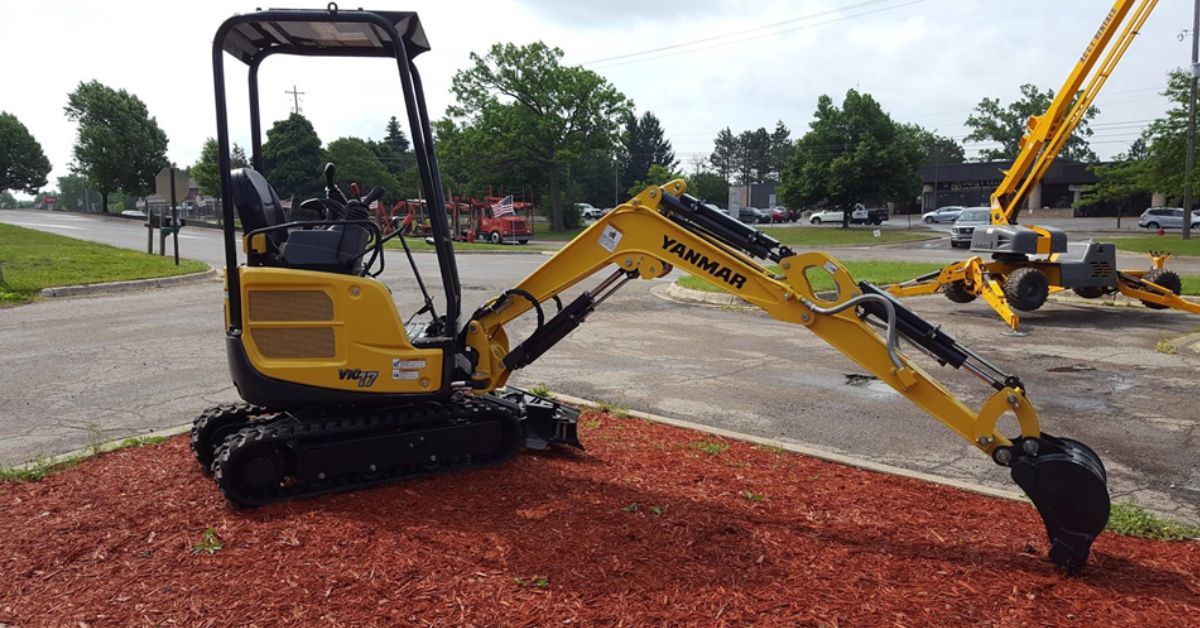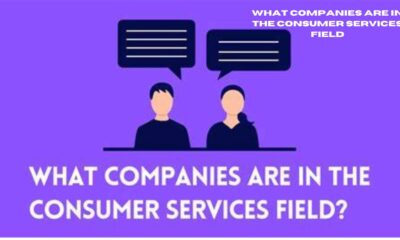BUSINESS
How Much Should I Pay for a Mini Excavator Rental?

Renting heavy machinery can be a cost-effective solution for construction, landscaping, and utility work. Mini excavators are among the most commonly rented machines due to their versatility, compact size, and ability to handle various tasks. Whether you’re a contractor working on a job site or a homeowner tackling a backyard project, renting a mini excavator can save you time and effort while keeping costs manageable.
But how much should you expect to pay for a mini excavator rental? The cost varies based on several factors, including rental duration, machine size, location, and any additional fees. In this guide, we’ll break down typical rental rates, key factors influencing pricing, and tips for getting the best deal.
What Is a Mini Excavator?
A mini excavator is a smaller version of a full-size excavator, typically weighing between 1 and 10 tons. These machines are designed for digging, trenching, lifting, and demolition in tight spaces where larger equipment would be difficult to maneuver. They are commonly used in:
- Residential and commercial construction – Digging foundations, grading land, and trenching for utility lines.
- Landscaping projects – Creating ponds, removing stumps, and installing drainage systems.
- Roadwork and site preparation – Small-scale excavation for repairs and installations.
- Demolition – Removing small structures, driveways, or concrete slabs.
Because of their compact design, mini excavators are easy to operate and transport, making them a popular choice for rental.
Average Cost to Rent a Mini Excavator
The cost of renting mini excavators varies by location, rental provider, and machine specifications. Below is a breakdown of typical rental prices:
| Rental Duration | Estimated Cost |
| Hourly | $50 – $100 per hour |
| Daily | $200 – $500 per day |
| Weekly | $800 – $2,500 per week |
| Monthly | $2,500 – $6,000 per month |
Additional Costs to Consider
While the base rental price covers the machine itself, you may encounter extra charges, including:
- Delivery and Pickup Fees – If you need the equipment delivered to your site, expect to pay an additional $100-$500 depending on distance.
- Fuel Costs – Most rental agreements require the machine to be returned with a full tank of fuel.
- Damage Waivers or Insurance – Some rental companies offer damage protection plans, which typically add 10-15% to the rental cost.
- Attachment Rentals – Additional tools such as augers, hydraulic breakers, or specialized buckets may cost $50-$200 per day.
- Operator Fees – If you require an experienced operator, expect an additional $50-$100 per hour.
Understanding these costs upfront can help you avoid unexpected expenses when renting mini excavators.
Factors That Affect Mini Excavator Rental Costs
Several factors influence the rental price of mini excavators, including machine specifications, rental duration, and geographic location. Understanding these factors can help you estimate your total cost.
1. Size and Weight of the Machine
Larger mini excavators with higher lifting and digging capacities tend to be more expensive. A 1-3 ton excavator is typically the most affordable, while a 6-10 ton model may cost significantly more to rent.
2. Rental Duration
Short-term rentals (hourly or daily) often have higher per-unit costs than weekly or monthly rentals. If you need an excavator for an extended period, a weekly or monthly rental provides better value.
3. Location
Rental prices vary by region. Urban areas with high demand tend to have higher rental rates compared to rural locations. Additionally, states with a strong construction industry may have more competitive pricing due to increased equipment availability.
4. Rental Company Policies
Different rental providers set their own pricing based on equipment availability, brand reputation, and service quality. Comparing quotes from multiple companies can help you find the best deal.
5. Seasonal Demand
The time of year can impact rental rates. During peak construction seasons (spring and summer), demand for mini excavators is higher, leading to increased rental costs.
Where to Rent a Mini Excavator
There are several options for renting mini excavators, each with its advantages.
1. Local Equipment Rental Companies
Independent rental providers may offer flexible terms and personalized service.
2. National Rental Chains
Companies like United Rentals, Sunbelt Rentals, and Herc Rentals provide a wide selection of equipment with standardized pricing and nationwide availability.
3. Dealership Rentals
Some heavy equipment dealers, such as John Deere and Caterpillar, offer rental programs for their machinery.
4. Online Rental Marketplaces
Websites like BigRentz and EquipmentShare allow renters to compare pricing from multiple suppliers.
Tips for Getting the Best Rental Price
If you’re looking to rent mini excavators while staying within budget, these tips can help:
1. Get Multiple Quotes
Compare prices from at least three rental providers to find the most competitive rate.
2. Book in Advance
Demand for equipment rentals is higher in warmer months. Reserving your rental early can help you secure lower rates.
3. Choose the Right Size
Renting a larger excavator than necessary will increase costs. Make sure you select the right size for your project.
4. Look for Promotions or Discounts
Some rental companies offer discounts for long-term rentals or repeat customers.
5. Understand the Rental Agreement
Be aware of additional fees, such as late return charges or maintenance costs.
Renting vs. Buying: Which Is the Better Option?
For businesses and individuals who frequently use mini excavators, deciding whether to rent or buy is an important financial consideration.
When Renting Is the Better Choice:
- You only need the excavator for a short-term project.
- You want to avoid maintenance and repair costs.
- You lack storage space for heavy equipment.
- You need different models for different jobs.
When Buying Is the Better Choice:
- You frequently use an excavator for ongoing projects.
- You want to invest in equipment that adds value to your business.
- You plan to customize or modify the excavator.
- You want to avoid long-term rental costs.
For most occasional users, renting is the more cost-effective option. However, businesses that require an excavator regularly may benefit from ownership.
Final Thoughts
Renting a mini excavator is a practical solution for contractors, landscapers, and homeowners who need powerful excavation equipment without the commitment of ownership. Rental costs vary based on machine size, duration, and location, with hourly rates starting at $50 and monthly rentals reaching up to $6,000.
By comparing rental providers, booking in advance, and choosing the right machine size, you can ensure you’re getting the best deal. Whether you need an excavator for a single-day project or a long-term construction job, renting provides the flexibility and affordability to complete the job efficiently.
BUSINESS
Is the Kennedy Funding Ripoff Report Accurate or Misleading?

Kennedy funding ripoff report often appears in online searches when people want to know if this private lending firm is trustworthy or not. Since real estate financing plays such a critical role in the success of property projects, it is natural for investors, developers, and borrowers to search for transparency. This article provides a detailed, expert-level analysis to help you separate fact from speculation, using industry insights, comparisons, and best practices.
Quick Answer
The kennedy funding ripoff report is not an official legal finding but rather a collection of consumer complaints and online discussions. While some borrowers report dissatisfaction with loan terms or processes, Kennedy Funding remains an active lender specializing in hard money loans for real estate. The key is understanding their lending model before borrowing.
Understanding the Kennedy Funding Ripoff Report
The phrase “kennedy funding ripoff report” has circulated on consumer complaint boards for years. Typically, such reports are written by borrowers who may have faced unexpected costs, stricter terms, or delays in loan funding. But in financial lending, context matters.
Kennedy Funding operates in a niche market: hard money lending. Unlike banks, which have rigid approval processes, hard money lenders offer quick, asset-based loans. This flexibility often comes with higher fees and interest rates, which can feel predatory if the borrower did not fully understand the terms beforehand.
Why Do Ripoff Reports Exist in Finance?
Every financial company, from global banks to private lenders, eventually faces consumer complaints. The kennedy funding ripoff report reflects this broader trend. Reports often stem from:
- Misunderstanding of loan terms
- Expectations of traditional lending practices
- High-risk projects where banks refuse financing
- Borrowers facing default or foreclosure
According to industry experts, transparency and borrower education are the strongest defenses against complaints.
“Hard money loans are not designed to be cheap; they are designed to be accessible when banks say no.” — Real Estate Finance Analyst
The Business Model Behind Kennedy Funding
Kennedy Funding positions itself as a last-resort lender for developers and investors. Their model focuses on:
- Speed of approval (days, not months)
- Collateral-based lending
- International reach (loans in multiple countries)
- Financing for distressed or unconventional properties
When borrowers misunderstand these conditions, complaints like the kennedy funding ripoff report surface. But from a business perspective, the terms reflect the higher risks lenders take on.
The Reality of Hard Money Loans
Hard money loans are fundamentally different from conventional bank loans:
- Collateral First – Approval depends on property value, not credit score.
- Higher Interest – Rates often range from 10–18%.
- Shorter Terms – Typically 1–3 years.
- Flexibility – Useful for properties in legal disputes, bankruptcies, or poor conditions.
Borrowers who enter without understanding this framework may later contribute to complaints such as the kennedy funding ripoff report.
Common Themes in the Kennedy Funding Ripoff Report
Based on collected consumer feedback, the recurring issues often include:
- Unexpected fees – Processing or legal costs that felt excessive.
- High interest rates – Compared to traditional mortgages.
- Strict repayment terms – Shorter windows to refinance or sell.
- Communication issues – Some borrowers felt uninformed during the process.
Each of these themes highlights the gap between borrower expectations and the actual hard money lending model.
Comparison Table: Kennedy Funding vs. Traditional Bank Lending
| Feature | Kennedy Funding (Hard Money) | Traditional Bank Loan |
|---|---|---|
| Approval Speed | Days | Weeks to Months |
| Interest Rates | 10–18% | 4–7% (average) |
| Loan Term | 1–3 years | 10–30 years |
| Collateral Focus | Primary factor | Secondary factor |
| Accessibility | High for risky projects | Low for risky projects |
| Flexibility | Very flexible | Limited by policy |
This table shows why borrowers who expected bank-like loans may later publish something like a kennedy funding ripoff report.
Industry Standards and Best Practices
The Mortgage Bankers Association emphasizes borrower due diligence. Investors must:
- Review all closing documents carefully
- Ask for breakdowns of every fee
- Compare offers from multiple lenders
- Assess whether a quick loan outweighs long-term costs
When these steps are skipped, negative perceptions—like those found in the kennedy funding ripoff report—are more likely.
EXPERT ANSWERS
Q1: Is the Kennedy Funding ripoff report legally binding?
No. The kennedy funding ripoff report is not a court ruling; it is an online consumer complaint platform.
Q2: Why are Kennedy Funding loans considered expensive?
Hard money loans carry higher costs because they provide access to borrowers banks would reject, offsetting higher risk with higher interest and fees.
Q3: Can complaints against Kennedy Funding be trusted?
Some reflect real borrower frustrations, while others may stem from misunderstandings. Always cross-check with multiple reviews and documents.
Q4: What alternatives exist to Kennedy Funding?
Alternatives include credit unions, private equity investors, crowdfunding platforms, or regional community banks—though these may not approve high-risk projects.
Q5: How should borrowers protect themselves?
By requesting complete transparency on fees, consulting a real estate attorney, and comparing multiple offers before signing.
Balanced Perspectives on the Kennedy Funding Ripoff Report
Not every borrower is dissatisfied. Many have successfully used Kennedy Funding loans to complete time-sensitive real estate deals. For some, the company provided financing when no bank would touch the project.
Positive reports highlight:
- Rapid approvals
- Willingness to finance distressed assets
- International scope
Thus, the kennedy funding ripoff report represents only one side of a complex market reality.
Case Study: Risk vs. Reward
Consider a developer who secures a $5M loan for a distressed property. A traditional bank refuses financing, but Kennedy Funding approves within weeks.
- The developer pays 12% interest but flips the property within 18 months for a large profit.
- Despite high costs, the loan enables success.
For another borrower, delays in refinancing may lead to default—fueling the kennedy funding ripoff report narrative.
Expert Opinions
Financial experts often stress education. Borrowers must evaluate:
- Cost vs. urgency
- Collateral risk
- Exit strategy
“Hard money lending isn’t inherently bad. It becomes a problem when borrowers expect it to function like a bank mortgage.” — Lending Consultant, 2025
Key Takeaways for Borrowers
- Read the fine print – Transparency avoids later disputes.
- Plan an exit strategy – Hard money loans are short-term.
- Seek legal review – Independent attorneys can clarify terms.
- Compare lenders – Don’t rely on one offer alone.
Borrowers who take these steps are less likely to contribute to another kennedy funding ripoff report.
Conclusion:
The kennedy funding ripoff report reflects the natural tension between borrower expectations and the realities of hard money lending. Kennedy Funding fills a vital niche, offering quick, asset-backed loans for high-risk or unconventional real estate deals. While costs and terms may feel steep compared to traditional banks, this is the trade-off for accessibility and speed.
Informed borrowers who research, compare, and plan ahead can avoid negative experiences. Ultimately, understanding the rules of hard money lending ensures borrowers can leverage Kennedy Funding effectively—without later feeling the need to write a ripoff report.
FAQ’s
What is the purpose of the Kennedy Funding ripoff report?
It serves as a platform for borrower complaints, not a legal judgment. Its purpose is to share experiences, both positive and negative.
Is Kennedy Funding a scam?
No. Kennedy Funding is a legitimate private lender. Complaints usually involve dissatisfaction with terms rather than fraudulent activity.
Why are hard money loans so costly?
They involve higher risk, faster processing, and fewer borrower qualifications. Higher interest offsets these risks.
How can borrowers avoid problems with Kennedy Funding?
By reading all contracts, asking questions about fees, and consulting professionals before signing.
Does Kennedy Funding operate internationally?
Yes. The company is known for providing loans across borders, including in regions where traditional banks are hesitant.
Are ripoff reports permanent?
Yes, once published online, a ripoff report typically remains visible. Borrowers should balance such reports with broader research before deciding.
BUSINESS
Why Standard Allowed Minutes Matter in Factory Management

If you’re an industrial engineer, production manager, or apparel manufacturer, you’ve probably faced the challenge of balancing productivity with fair labor standards. That’s where standard allowed minutes (SAM) come in. SAM isn’t just a number; it’s the backbone of work measurement in production, helping businesses cut costs, reward workers fairly, and boost garment production efficiency.
But here’s the catch—many factories either calculate it incorrectly or confuse it with standard minute value (SMV), leading to poor efficiency analysis. This article unpacks SAM with formulas, examples, expert insights, and practical uses you can apply right away.
Quick Answer
Standard Allowed Minutes (SAM) represent the time a trained worker needs to complete a specific task under defined working conditions. It’s widely used in the garment and manufacturing industries to measure productivity, calculate labor costs, and set efficiency benchmarks.
What Are Standard Allowed Minutes (SAM) in Garment Production?
Standard Allowed Minutes (SAM) is a work study method used in industrial engineering to define how long it should take a skilled worker to complete a task at a normal pace.
- Industry Use: Apparel factories rely on SAM to estimate labor cost per garment.
- Academic Use: Universities and research institutes like Harvard.edu highlight SAM as a core metric in industrial engineering studies.
- Business Use: HR managers use SAM to design fair incentive systems.
Why Are Standard Allowed Minutes Important in Manufacturing?
- Costing: SAM helps in labor cost calculation in apparel manufacturing.
- Efficiency: It allows production line balancing and smooth workflow.
- Fairness: Workers are compensated based on realistic time targets.
- Improvement: Provides benchmarks for efficiency calculation formulas.
Without SAM, factories often rely on guesswork, leading to wage disputes and production delays.
How to Calculate Standard Allowed Minutes (SAM) in a Factory
The formula for standard allowed minutes is:
SAM=(BasicTime+RelaxationAllowance+ContingencyAllowance+MachineDelayAllowance)SAM = (Basic Time + Relaxation Allowance + Contingency Allowance + Machine Delay Allowance)
- Basic Time: Measured using a time study in industrial engineering (stopwatch or video analysis).
- Relaxation Allowance: Accounts for worker fatigue.
- Contingency Allowance: Covers unexpected delays.
- Machine Delay Allowance: Includes technical downtime.
Example in garment industry:
If sewing a shirt takes 1.2 minutes (basic time), plus allowances of 10% for relaxation, 5% for contingencies, and 5% for machine delays, the SAM = 1.2 × 1.2 = 1.44 minutes.
Standard Minute Value (SMV) vs Standard Allowed Minutes (SAM)
| Factor | Standard Allowed Minutes (SAM) | Standard Minute Value (SMV) |
|---|---|---|
| Definition | Time for one operation including allowances | Core operation time before allowances |
| Use Case | Wage calculation, costing, efficiency analysis | Raw productivity studies |
| Industry | Apparel, manufacturing | Industrial engineering labs |
| Accuracy | More practical for real-world factories | More theoretical |
In short, SAM = SMV + Allowances.
Role of SAM in Improving Factory Efficiency
Factories use SAM to:
- Balance production lines by assigning fair workloads.
- Measure actual minutes vs SAM for efficiency explained.
- Introduce incentives for workers who exceed targets.
- Support lean manufacturing and Six Sigma initiatives.
According to ScienceDirect.com, SAM-based efficiency tracking can improve productivity by 10–15% within six months when paired with training.
Examples of SAM Calculation in Garment Industry
- Jeans sewing: 15 SAM
- Shirt collar attachment: 2.5 SAM
- Buttonhole making: 0.8 SAM
- Zipper setting: 3 SAM
These numbers vary by complexity, fabric type, and machine used, but they give managers benchmarks to plan workflow.
How Do Companies Use Standard Allowed Minutes to Set Wages?
Many HR departments calculate piece-rate wages using SAM. For example:
- If a worker produces 40 shirts per hour, and each shirt has 20 SAM, then:
- Total SAM produced = 800
- If the efficiency benchmark is 600 SAM/hour, the worker’s efficiency = 133%
- This efficiency translates into higher incentive pay.
This system ensures wages align with performance while keeping fairness intact.
Best Practices for Work Study and SAM Calculation
- Use video analysis tools instead of stopwatches for accuracy.
- Regularly update SAM values as machinery or processes change.
- Benchmark against industry averages published by organizations like TextileWorld.com.
- Train operators to work at “normal pace” during studies.
- Involve HR when linking SAM with wage structures to avoid disputes.
EXPERT ANSWERS
What’s the difference between standard allowed minutes and actual minutes?
Standard allowed minutes are planned times, while actual minutes are the real time workers spend. Efficiency is calculated by dividing SAM produced by actual time worked.
Why is SAM widely used in the garment industry?
Because apparel production involves repetitive operations, SAM provides a scientific way to calculate labor costs and maintain consistency across production lines.
Can SAM be applied outside garments?
Yes. SAM is used in automobile assembly, electronics, and food packaging—anywhere standardized repetitive tasks exist.
Is SAM affected by worker skill?
Yes. Although SAM assumes a “trained” operator, skill variations affect actual performance. That’s why allowances are included.
FAQ’s
1. How to calculate standard allowed minutes (SAM) in a factory?
You calculate SAM by measuring the basic time for a task and adding allowances for fatigue, contingencies, and machine delays. A time study or work sampling is usually conducted to determine the base figure.
2. Why are standard allowed minutes important in manufacturing?
They’re critical for costing, efficiency measurement, and fair wages. Without SAM, production planning relies on assumptions, which can harm both employers and workers.
3. What are examples of SAM in garment production?
SAM for attaching a collar may be 2.5 minutes, button stitching 1 minute, and sewing side seams 4 minutes. These vary across factories and machinery.
Author Bio
Daniel Harris is a professional content writer with expertise in SEO-driven manufacturing, technology, and finance topics. With a background in business education, he specializes in creating industry-focused content that balances technical accuracy with reader-friendly clarity.
Sources & References
- https://www.sciencedirect.com
- https://www.textileworld.com
- https://www.harvard.edu
BUSINESS
Chartered Accountants Benefits for Small Businesses

Running a business—or even managing personal finances—can feel overwhelming when taxes, audits, and financial planning pile up. That’s where chartered accountants (CAs) step in. Unlike regular accountants, they bring advanced training, global recognition, and a deeper grasp of financial strategy.
If you’re a small business owner, corporate executive, freelancer, startup founder, or even a student dreaming of a finance career, understanding the benefits of hiring a chartered accountant can help you save money, stay compliant, and make smarter long-term decisions.
Quick Answer
The main chartered accountants benefits include smarter tax savings, reliable compliance, cost efficiency, and expert financial advice that drives sustainable growth for small businesses, startups, corporations, freelancers, and even students exploring finance careers.
Why Hire a Chartered Accountant?
Hiring a CA isn’t just about filing taxes—it’s about gaining a financial partner. Let’s break down the advantages of hiring a chartered accountant across different needs.
Chartered Accountants Benefits for Small Business Owners
- Tax Savings: CAs identify deductions, exemptions, and legal strategies that reduce liability.
- Compliance Made Easy: They handle government regulations, filings, and audits without headaches.
- Cost Control: Through cash flow analysis, they help businesses avoid overspending.
According to Investopedia.com, outsourcing accounting saves small businesses thousands each year compared to managing finances in-house.
Corporate Executives & Finance Managers
- Risk Mitigation: CAs provide auditing and compliance services that keep companies transparent.
- Investor Confidence: Professionally audited statements build credibility.
- Strategic Planning: From mergers to expansion, financial advisory benefits guide executive decisions.
Harvard.edu research highlights that companies with chartered accountants in leadership roles show higher investor trust and better governance.
Freelancers & Self-Employed Professionals
Freelancers often ask: “Is it worth hiring a chartered accountant for freelancers or self-employed people?”
The answer—absolutely.
- Simplified Taxes: CAs track expenses, deductions, and quarterly filings.
- Business Structure Advice: Whether to operate as sole proprietor, LLC, or corporation.
- Time Savings: Focus on projects instead of accounting headaches.
Startups & Investors
Startups thrive on financial clarity. Chartered accountants benefits for startups seeking investors include:
- Investor-Ready Reports: CAs prepare transparent financials for funding rounds.
- Valuation Support: They ensure accurate startup valuations.
- Scalability Insights: Beyond accounting, they advise on growth strategies.
As per PwC.com reports, investor-backed startups with CA support raise capital faster than those without.
Students & Job Seekers
If you’re considering a career in finance, here’s why CAs matter:
- Global Career Path: Chartered accountancy is recognized worldwide.
- High Demand: Every industry needs qualified professionals.
- Skill Development: You gain auditing, tax, and advisory expertise.
Chartered Accountant vs Regular Accountant
| Feature | Chartered Accountant | Regular Accountant |
|---|---|---|
| Qualification | Globally certified, rigorous training | Local diploma/degree |
| Services | Tax, audit, advisory, compliance | Basic bookkeeping & payroll |
| Authority | Can sign audits & certify financials | Limited scope |
| Value | Strategic growth partner | Transaction-focused |
Long-Term Chartered Accountants Benefits
- Financial stability through professional planning.
- Reduced risk of penalties or audits.
- Better access to loans and investment.
- Peace of mind knowing compliance is covered.
EXPERT ANSWERS
What are the benefits of hiring a chartered accountant for small businesses?
Small businesses benefit from tax savings, compliance, and long-term cost reduction. CAs ensure you don’t miss deductions and help you avoid fines.
How can a chartered accountant help with tax savings and compliance?
They identify legal tax-saving opportunities, track changing regulations, and file accurate returns. This prevents penalties and improves efficiency.
Do chartered accountants provide business growth strategies beyond accounting?
Yes—CAs act as strategic advisors. They assess risk, optimize financial structures, and recommend growth pathways tailored to your industry.
Difference between an accountant and a chartered accountant – which one is better for my business?
If you just need bookkeeping, a regular accountant may suffice. But for tax planning, audits, and growth, a CA brings far more expertise and authority.
How much money can I save with a chartered accountant compared to doing my own taxes?
Savings vary, but studies show businesses save up to 20–30% in unnecessary expenses when guided by a CA, compared to DIY tax management.
FAQ’s
Q1: Is it worth hiring a CA if my business is very small?
Yes. Even micro-businesses benefit from professional tax savings and compliance guidance. Over time, the cost pays for itself.
Q2: Can freelancers or gig workers afford a chartered accountant?
Many CAs offer flexible, affordable packages. Plus, the savings in taxes and time often outweigh the fees.
Q3: Do chartered accountants handle international business regulations?
Yes. Many CAs specialize in cross-border trade, expat taxation, and global compliance—critical for expanding businesses.
Conclusion
The chartered accountants benefits go beyond simple number-crunching. They save money, prevent costly mistakes, and provide the financial clarity every professional or business needs. Whether you’re a freelancer, startup, or corporate leader, having a CA by your side means building a stronger, more stable future.
Pro Tip: If you’re unsure where to start, consider booking a free consultation with a CA to understand how they can add value to your specific situation.
Author Bio
Ayesha Rahman is a professional content writer with expertise in SEO-driven finance and business topics. With a background in business education and 5+ years of writing experience, she helps brands build trust through authoritative content.
Sources & References
- https://www.investopedia.com
- https://www.harvard.edu
- https://www.pwc.com

 Cartoon2 months ago
Cartoon2 months agoUnlocking the Potential of Nekopoi.care: A Comprehensive Guide

 Game2 years ago
Game2 years agoExploring Aopickleballthietke.com: Your Ultimate Pickleball Destination

 BUSINESS1 year ago
BUSINESS1 year agoUnraveling the Mystery of 405 Howard Street San Francisco charge on Credit Card

 BUSINESS2 months ago
BUSINESS2 months agoWhat Companies Are In The Consumer Services Field

 HOME IMPROVEMENT2 years ago
HOME IMPROVEMENT2 years agoVtrahe vs. Other Platforms: Which One Reigns Supreme?

 ENTERTAINMENT1 year ago
ENTERTAINMENT1 year agoUnderstanding Bunkr Album: A Comprehensive Guide

 TECHNOLOGY1 year ago
TECHNOLOGY1 year agoThe Guide to Using Anon Vault for Secure Data Storage

 ENTERTAINMENT2 years ago
ENTERTAINMENT2 years agoThe Ultimate Guide to MP3Juices: Free Music Download
















